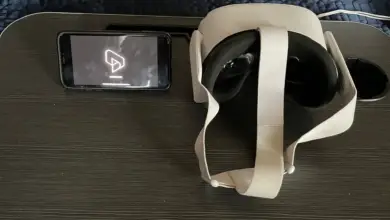Why is my Oculus Quest 2 Lagging/ Stuttering? (Get Smooth Gameplay)

Many may have found themselves with a new Oculus Quest 2 following the holiday season. While this is exciting, it can be frustrating if you find that the device doesn’t work as it should, as many people report a major lagging issue. If you’re one of those people, we can help!
High display options such as render resolution and refresh rate have been found to be a significant cause of making Oculus Quest 2 lag, but an incompatible PC or laptop, bad graphics cards, and outdated Windows, & setting your sound Output to your Oculus headset may also be to causing your device to lag or stutter.
The rest of this article will explain why your Oculus Quest 2 is so laggy and how you can fix the issue.
Why is my Oculus Quest 2 so Laggy?
The Oculus Quest 2, a virtual reality headset, was unveiled in September of 2020. A successor of the Oculus Quest created by Facebook Technologies, the Oculus Quest 2 is a great way to enjoy the world of VR wonder.
Unfortunately, many have reported that the Oculus Quest 2 has had many bugs and issues, one of which being a big lagging issue, which may be quite disappointing considering the price point of this product. Follow along as we dive into the reasons for these issues and what you can do to fix them.
1. Graphics Setup
Many have reported that they have used the Oculus desktop app to fine-tune their graphics preferences via Oculus Link. When doing this, you may have decided to crank the display options, such as refresh rate and render resolution, two of the main settings you can change, which will slow down your device.
While the recommended refresh rate is 72 Hz, many will try to select 90 Hz. Within the program, if you change the refresh rate, the software will automatically adjust the render resolution as well as long as the “automatic” tab is on, which is recommended.
The program does this so that the software can consider your PC’s specs, therefore providing optimal values.
That being said, there’s only so much the software can do, and if both of these are cranked up as high as they can go, you may experience a lot of lagging issues.
What you can do to fix this issue
If you are experiencing this issue, here are some things that you can do to fix it:
- Open the Oculus app on your desktop computer
- Locate “Devices-” you will find this on the left side of the app!
- Click “Quest and Touch” and then “Graphics Preferences.”
- Set the refresh rate back to the recommended 72 Hz
- Make sure to toggle the “automatic” option for “Rendering Resolution” off
- Try decreasing the “Rendering Resolution” to the lowest option you can go
When this is done, see how your device is working. Changing these settings allows your computer to use the least amount of resources possible, hopefully solving your lagging issues.
If this trick works, you can slowly raise the render resolution. Eventually, you will be able to find a balance between the best visual quality and performance.
(Skip to 5:55 for video demonstration)
2. Oculus Link Compatibility
A fairly obvious problem, one issue you may face is that your computer isn’t compatible with Oculus Link, which would cause many problems with how it runs.
If you want to check to make sure that your PC is compatible with Oculus Link, you should take a look. Even if your PC only meets the minimum requirements, it could lead to major lagging issues.
What are the compatibility requirements?
Oculus Link requires the following specifications to function correctly:
- Processor: Intel i5-4590/AMD Ryzen 5 1500X or greater
- Memory: 8 GB+ Ram
- Operating System: Windows 10
- Oculus Link also requires at least one USB port.
3. Toggle Console Window Visibility Solution (Debug Tool)
On your PC, search for the Oculus App, right-click it to Search For File Location, select Oculus once more, right-click to Search file Location. Select the Support tab Oculus-diagnostics folder OculusDebufTool
on the debug tool, locate the Service tab & select it; next, select Toggle Console Window Visibility. This will open a window that will output console your log; your will need to keep this tab open while you are using your Oculus & should see major improvements.
4. Change Sound Output Device
A solution many users found helpful is by changing the sound output device to your Speakers or Bluetooth headphones. Your Oculus headset is typically set as your output device by default. Simply changing your Output device to your PC’s speakers can have a major impact on performance. To do this:
- Go to volume settings on your PC.
- If your Oculus headset is set as your Output Device, select a different output device such as your speakers or Bluetooth headphones.
- On your Oculus desktop app, set “Hear VR audio on desktop” to On Hear computer audio in VR” to Off.
5. Issues With Your Third-Party Oculus Link Cable
If like many of us, you’ve opted for a third-party Oculus Quest cable, you will need to ensure that your cable is not the primary source of your lag issues.
While there are many third-party Oculus Quest Cables in the market, choosing one can be rather difficult since many cables result in a mediocre performance, so you will need to ensure that the cable you select is true to the specs they claim to have.
6. Out of date graphics card drivers
Another issue you may have is an outdated graphics card driver. When running any kind of software, it’s essential to use the latest released drivers, as they have been updated for a reason.
Keeping an outdated driver can cause many issues, including compatibility issues, security issues, and performance issues, which could lead to a problem with your Oculus Quest 2 lagging.
If you use your computer for gaming, you will want to ensure that whatever graphics card driver you have is always up to date.
7. Out of date software
If your Oculus Quest 2 is still lagging, you should check to make sure that the Oculus Quest 2 software, as well as the Oculus Software on your computer, are current, running on identical versions.
This may be tricky, as the operating system for the Oculus Quest works differently than many other operating system updates.
Unlike other operating system updates for different pieces of technology, Facebook chooses to roll out the updates for Oculus Quest slowly, meaning not everyone will get this update simultaneously.
There will be an update scheduled for a particular day. Some users will then be able to manually start the update if their headsets have not already been automatically updated. Some users will not have this update for a week or even longer.
How to check your software version
If you aren’t normally a gamer and not super familiar with locating software versions, here are some easy steps you can follow:
- Locate and click on “Settings,” which should be found on the bottom of the navigation bar on the Oculus Quest
- Click on the “See All” button on the navigation bar
- Click on the “About” tab
- Locate the first item listed, which will show your software version
You can find out what the latest release of Oculus is by going to the Oculus Release Notes page.
If your software versions match, it means that your device most likely updated automatically, and it’s one less thing you have to worry about!
8. Out of date windows
Many of us consistently ignore messages from our computers telling us that there is an update available. If you are having issues with lagging, you may want to make sure that your system is actually updated!
When you don’t update your computer, it starts to change how your computer processes all sorts of things. You may find that your computer as a whole is actually working slower than usual. If you have not updated your software in a long time, you absolutely want to make sure to do so if you are having issues with your Oculus Quest 2 lagging.
9. USB port issues
If none of the previous fixes helped your lagging issues, you should try looking at your USB port. It may be a good idea for you to test other USB ports on your computer.
To see how a USB port works with your Oculus, you should do a “USB test.” This can be found within the Oculus software, and it’ll show you the actual bandwidth for each port you have.
If the ports are okay, you may also want to try using a different cable if you have one available to you.
10. Changing Processing Priority
Windows does a great job allocating and sharing system resources for most software. Unfortunately, there have been many problems with this for Oculus Link. If you need to look into other reasons your Oculus could be lagging, it may be a good idea to raise the process priority of a specific Oculus link process. It will be OVRServer_x64.exe.
How do you change processing priority?
Although this is only recommended as a last resort option, you should look into it as a valid option to get your system to stop lagging if nothing else has worked for you so far.
Changing this priority can be done through the Windows Task Manager. You will need to scroll through the list and find “OVRServer_x64.exe. Once there, you will need to click on it and select “Set Priority,” and then select “high.”
11. USB Power Saving
When using the Oculus Quest and Oculus Link, a lot of data is being moved around. From your PC to your headset, data is compressed first, and after reaching the headset, it is decompressed again.
Because of this, it’s imperative that your USB ports are working at full capacity. It could cause many different performance issues if they are not, including lagging.
If you have connectivity issues, Windows may cut or reduce power output to specific USB ports.
How to disable USB Power Saving
If you find that this is an issue, you should try disabling the USB power saving option. To do this, simply go to the Device Manager on your computer and locate “Universal Serial Bus Controllers.” After you find that, right-click on “properties” and find “power management.” Once that has been located, you will want to disable “Allow computer to turn off this device to save power.”
12. Reduce Encode Bitrate
Because data is compressed when transferred, there could be an issue with the encode bitrate. You can change this data to see if it helps with any performance issues you may be having, including lagging.
How to change this
- Find C:\Program Files\Oculus\Support\Oculus-diagnostics
- Right-click “Oculus Debug Tools.” Open as an Administrator
- Locate “Encode Bitrate” in the settings
Here, you should start to test with values of 150Mbps, going up to 250Mbps.
Final Thoughts
Although many have reported having problems with their Oculus Quest 2 lagging, there are many different reasons it could be doing this. Although this may sound like a bad thing, it means that there are many ways to solve the problem!
- How to Pair Meta Quest 3 Controllers with Your Quest 3 Headset: A Quick Guide
- How to Charge Meta Quest 3: A Guide to Powering Up Your VR Experience
- How to Cast Meta Quest 3 to Samsung TV: A Step-by-Step Guide
- How To Factory Reset Your Meta Quest 3: A Step-by-Step Guide
- How to Power On and Off the Meta Quest 3






